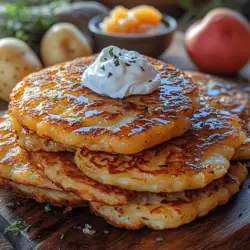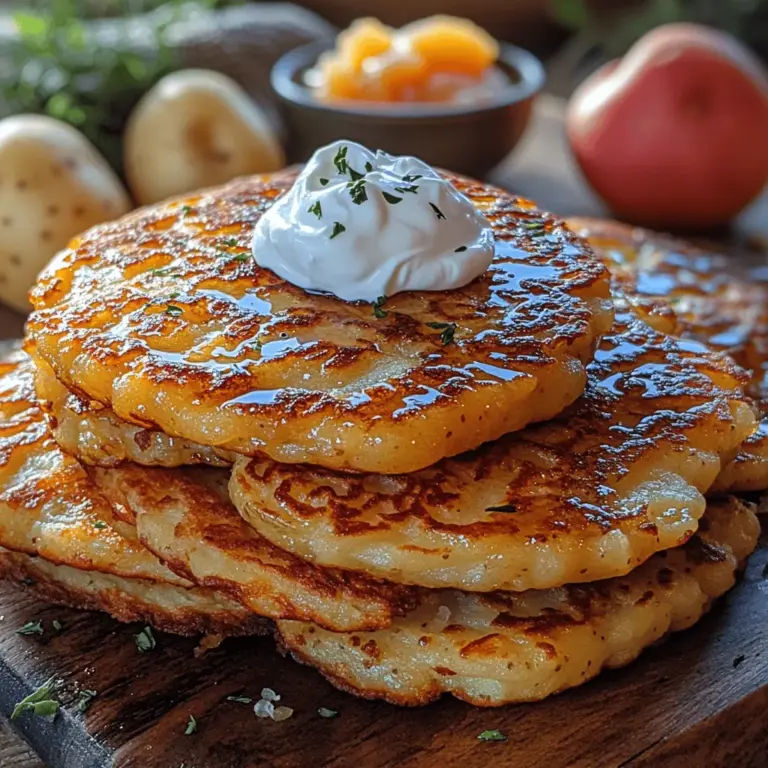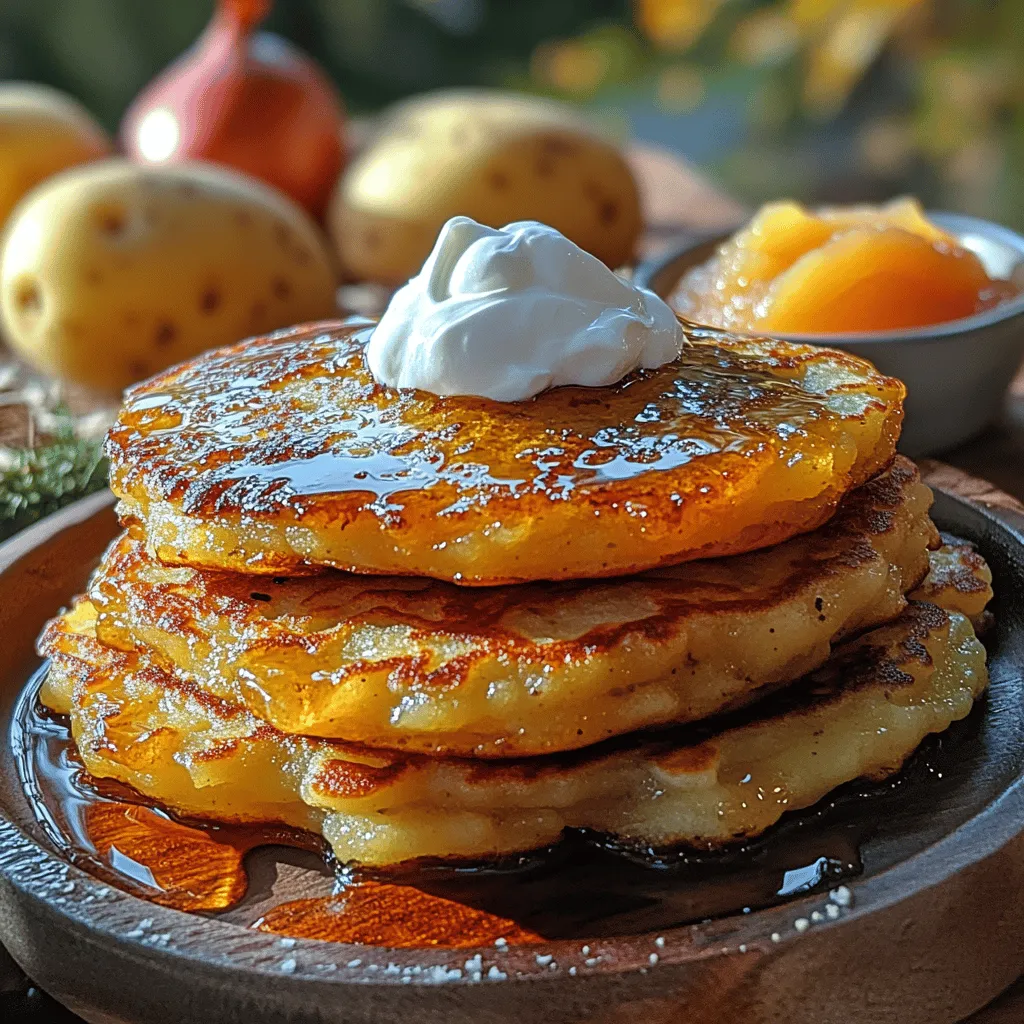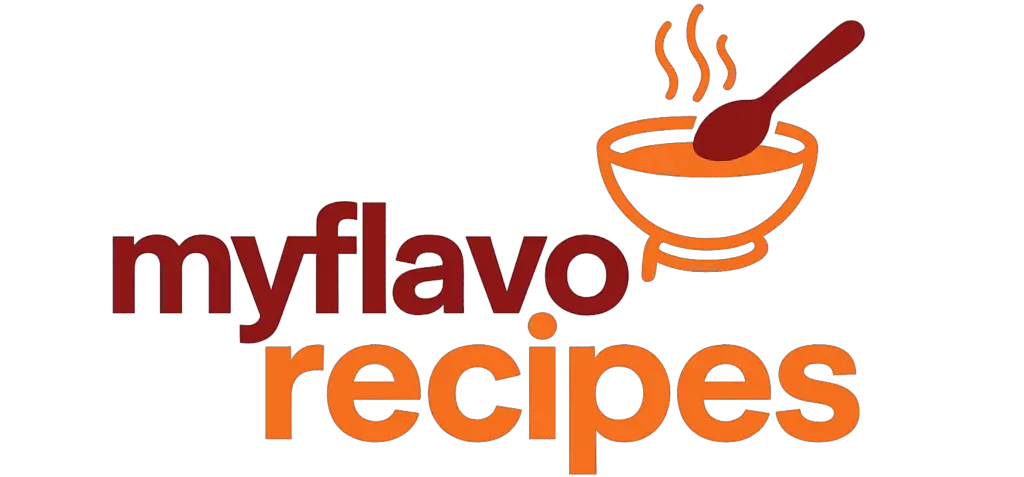Introduction
Kartoffelpuffer, or potato pancakes, are a cherished staple in German cuisine, celebrated for their crispy texture and delightful flavor. Originating from the heart of Germany, these golden-brown delights have woven themselves into the fabric of cultural festivities, family gatherings, and holiday celebrations. Whether served at Christmas markets or enjoyed as a comforting side dish, Kartoffelpuffer embody a sense of warmth and nostalgia that resonates with many.
The beauty of Kartoffelpuffer lies not just in their taste but also in their simplicity. With a handful of fresh ingredients, you can whip up a batch of these crispy potato pancakes that are sure to impress your family and friends. This recipe will guide you through the process of making perfect Kartoffelpuffer, highlighting essential tips and techniques to ensure a delicious, authentic experience.
Understanding Kartoffelpuffer
Definition and Origin of Kartoffelpuffer
Kartoffelpuffer is a dish made primarily from grated potatoes, which are mixed with a few other ingredients and then fried until crisp and golden. The name itself translates to “potato puffs,” which aptly describes their shape and texture. This dish has roots that trace back centuries, with variations appearing in numerous cultures around the world.
In Germany, Kartoffelpuffer is particularly popular in regions like Bavaria and Hesse, where it is often enjoyed at fairs and during the festive season. Traditionally, these pancakes were a way to utilize the harvest, especially during the fall when potatoes were plentiful. Today, they remain a beloved comfort food, often served with applesauce or sour cream, making them a versatile dish suitable for any occasion.
Regional Variations
While the classic Kartoffelpuffer recipe remains consistent, many cultures have put their unique spin on this dish. For instance, in Eastern European countries, similar potato pancakes are known as latkes or placki ziemniaczane, often incorporating other ingredients such as cheese or herbs. Each region boasts its particular techniques and flavors, adding to the dish’s rich history.
In addition to cultural variations, the method of preparation can differ widely. Some recipes call for mixing in grated vegetables like zucchini or carrots for added nutrients and flavor, while others may introduce spices and herbs to create a unique taste profile. Regardless of the variation, the essence of Kartoffelpuffer as a comforting, crunchy treat remains the same.
Nutritional Benefits
Let’s talk about the nutritional benefits of Kartoffelpuffer, focusing on its main ingredient: potatoes. Potatoes are not only a staple food around the globe but also a source of essential nutrients. Rich in vitamin C, potassium, and dietary fiber, they provide a satisfying base for this dish. When combined with fresh ingredients like onions and eggs, Kartoffelpuffer becomes a well-rounded option that can fit into a balanced diet.
Using high-quality ingredients is key to maximizing the health benefits of your Kartoffelpuffer. Fresh potatoes and onions not only contribute to the flavor but also ensure that you are getting the most nutrients possible. Additionally, by controlling the type and amount of oil used during frying, you can make this dish healthier without sacrificing taste.
Essential Ingredients for Crispy Kartoffelpuffer
To achieve the perfect crispy Kartoffelpuffer, it’s crucial to choose the right ingredients. Here’s an in-depth look at what you will need:
Starchy Potatoes
The foundation of any great Kartoffelpuffer is, of course, the potatoes. When selecting potatoes, opt for starchy varieties such as Russets or Yukon Gold. These types have a higher starch content, which helps to create a light and fluffy interior while achieving the desired crispiness on the outside. Waxy potatoes, on the other hand, tend to hold more moisture, which can lead to soggy pancakes.
Onion
Onions play a vital role in enhancing the flavor of Kartoffelpuffer. They add a subtle sweetness and moisture that balances the earthy taste of the potatoes. When grated finely, onions also help in achieving a uniform texture throughout the pancake. For the best results, use fresh onions; brown or yellow onions work particularly well in this recipe.
Egg
The egg is an essential binding agent in Kartoffelpuffer. It helps to hold the grated potatoes and other ingredients together, ensuring that your pancakes don’t fall apart during frying. Using a large egg is usually sufficient for most recipes, but feel free to adjust based on the quantity of potatoes used.
Flour
Flour is another critical ingredient that contributes to the crispy texture of Kartoffelpuffer. It absorbs moisture and helps to create a delicate crust when frying. All-purpose flour is typically used, but if you’re looking for a gluten-free alternative, you can experiment with rice flour or gluten-free blends. Just be mindful that the texture may vary slightly.
Seasonings
To elevate the flavor of your Kartoffelpuffer, simple seasonings such as salt, pepper, and optional nutmeg can make a significant difference. Salt enhances the natural flavors of the potatoes, while pepper adds a touch of spice. Nutmeg, although optional, brings a warm, aromatic note that complements the dish beautifully.
Frying Oil
Choosing the right oil for frying is crucial for achieving that perfect golden crust. Oils with high smoke points, such as vegetable oil, canola oil, or sunflower oil, are ideal for frying Kartoffelpuffer. These oils can withstand high temperatures without burning, ensuring that your pancakes cook evenly and develop a lovely crispy exterior.
Alternative Ingredients and Modifications
If you’re looking to modify the recipe for dietary restrictions or personal preferences, there are numerous alternatives you can consider. For instance, if you’re vegan, you can replace the egg with a flaxseed meal mixture or aquafaba (the liquid from canned chickpeas) to help bind the ingredients. Additionally, if you’re avoiding gluten, as mentioned earlier, experimenting with gluten-free flour can yield great results.
Step-by-Step Instructions for Perfect Kartoffelpuffer
Now that we’ve covered the essential ingredients, it’s time to delve into the preparation process. Here’s a detailed guide to help you make perfect Kartoffelpuffer every time:
Preparing the Potatoes
1. Peeling: Begin by peeling your starchy potatoes. This step is essential as the skin can create a gritty texture in the pancakes. Use a vegetable peeler for clean and even results.
2. Rinsing: After peeling, rinse the potatoes under cold running water. This helps to remove excess starch, which is crucial for achieving a crispy texture.
3. Grating: Using a box grater or food processor, grate the potatoes. Aim for a medium to coarse texture—too fine may cause the pancakes to be mushy, while too coarse can lead to uneven cooking.
4. Draining Excess Liquid: Once grated, place the potatoes in a clean kitchen towel or cheesecloth, and squeeze out as much moisture as possible. This step is vital for achieving crispiness, as excess moisture can lead to soggy pancakes.
5. Mixing with Other Ingredients: In a large mixing bowl, combine the grated potatoes with finely grated onion, egg, flour, and your chosen seasonings. Mix well until fully incorporated, ensuring that the ingredients are evenly distributed.
By following these initial steps, you set the foundation for a delicious batch of Kartoffelpuffer. The careful preparation of ingredients will ensure that your pancakes turn out crispy and flavorful, embodying the comforting essence of this traditional dish.
Stay tuned for the next part of this article, where we will dive into the frying process and additional tips for serving your Kartoffelpuffer to perfection.
Mixing Ingredients
To achieve the perfect Kartoffelpuffer, the right consistency of your potato mixture is crucial. Start by shredding your potatoes using a box grater or a food processor. The goal is to create a mix that is neither too wet nor too dry. If your potatoes release excess moisture, be sure to drain them thoroughly. You can use a clean kitchen towel to squeeze out any additional liquid, ensuring your patties are crispy rather than soggy.
Once your potatoes are properly prepared, combine them in a large bowl with finely chopped onions, a beaten egg, and flour to bind the mixture. The flour not only helps the pancakes hold together but also contributes to their crispy texture. Season with salt and pepper to taste, and if you want to add a twist, consider incorporating a pinch of nutmeg or a dash of garlic powder for additional flavor. Mixing these ingredients until evenly combined is essential; however, avoid overmixing, as this can lead to a gummy texture.
Heating Oil
Before you begin frying, it’s essential to heat your oil correctly to ensure your Kartoffelpuffer turn out perfectly crisp. Use a heavy-bottomed skillet or frying pan for even heat distribution. Add enough oil to cover the bottom of the pan generously—about 1/4 inch should suffice. Canola or vegetable oil works best due to their high smoke points.
To test if your oil is hot enough, drop a small amount of the potato mixture into the oil. If it sizzles immediately, you are ready to start frying. If the oil isn’t hot enough, the pancakes will absorb more oil, leading to greasiness. Conversely, if the oil is too hot, they will burn on the outside before cooking through. As a safety measure, keep a lid nearby to cover the pan in case of splattering, and never leave hot oil unattended.
Forming the Pancakes
Once your oil is heated, it’s time to form your Kartoffelpuffer. Use a large spoon or a 1/4 cup measuring cup to scoop out the mixture. With your hands, gently compact the mixture into a patty shape, about 1/2 inch thick. The key here is to ensure they are not too thick; otherwise, they may cook unevenly.
When placing the patties in the hot oil, do so carefully to prevent splashing. Fry in batches, giving each potato pancake enough space to crisp up without overcrowding the pan. If you find that the mixture is falling apart while shaping, consider adding a bit more flour to help bind it together.
Frying Process
Frying your Kartoffelpuffer in batches is crucial for achieving that coveted crispy exterior. Maintain a medium-high heat and monitor the temperature closely. Fry each patty for about 3-4 minutes on each side or until they are golden brown. Use a spatula to flip them gently, ensuring they don’t break apart.
If you notice that the first batch is browning too quickly, lower the heat slightly to allow the inside to cook through without burning. Conversely, if they take too long to brown, increase the heat a bit. Once fried, transfer the pancakes to a plate lined with paper towels to drain any excess oil, which will help keep them crispy.
Keeping Warm
As you continue frying batches, it’s essential to keep the Kartoffelpuffer warm without sacrificing their crispiness. Preheat your oven to a low temperature (around 200°F or 93°C) and place a wire rack on a baking sheet. After frying each batch, transfer them to the wire rack in the oven. This method allows air to circulate around the pancakes, preventing them from becoming soggy while keeping them warm for serving.
Serving Suggestions for Kartoffelpuffer
Traditionally, Kartoffelpuffer are served with a side of sour cream and applesauce, creating a delightful contrast of flavors. The rich creaminess of the sour cream pairs beautifully with the crispy potato pancakes, while the sweet and tart applesauce provides a refreshing balance.
To elevate your dining experience, consider experimenting with alternative toppings. For a savory twist, try serving them with a dollop of crème fraîche and chives, or top them with smoked salmon for an elegant appetizer. If you’re in the mood for something heartier, serve the Kartoffelpuffer alongside cooked sauerkraut or a fresh green salad.
Beverage pairings can also enhance your meal. A chilled German lager or pilsner complements the flavors of the pancakes beautifully, while a glass of crisp apple cider can add a refreshing touch.
Cultural Significance and Variations of Kartoffelpuffer
Kartoffelpuffer hold a special place in German culture, often enjoyed at Christmas markets and festivals. These golden, crispy delights are a staple at various family gatherings, where they are cherished not only for their taste but also for the tradition they represent. Many families have their own secret recipes or methods passed down through generations, making each Kartoffelpuffer experience unique.
Throughout the world, variations of Kartoffelpuffer can be found. In Poland, you may encounter “placki ziemniaczane,” which are similar potato pancakes often served with a side of sour cream. In Israel, a version called “latkes” is traditionally prepared during Hanukkah, made with grated potatoes and onions and served with applesauce. Each culture adds its own flair, showcasing the versatility of this beloved dish.
Troubleshooting Common Issues
While making Kartoffelpuffer can be straightforward, there are common pitfalls to be aware of. One primary concern is sogginess. To prevent this, ensure you thoroughly drain the potatoes before mixing and do not overcrowd the pan while frying.
Achieving the perfect golden color is another challenge. If your pancakes appear too pale, consider increasing the frying time slightly or adjusting the heat. Conversely, if they are browning too quickly, lower the temperature to ensure they cook evenly.
Lastly, cooking times can vary based on stove types or pan sizes. If you’re using a smaller skillet, be mindful that the oil may heat differently. Always keep an eye on the color and texture of the pancakes, adjusting your cooking times as necessary to achieve that ideal crispiness.
Conclusion
Making homemade Kartoffelpuffer is not just about the food; it’s about the joy and satisfaction that comes with preparing a dish steeped in tradition. As you savor each crispy bite, you’ll find that Kartoffelpuffer are incredibly versatile, making them suitable for any occasion—from a cozy family dinner to a festive celebration.
This dish has the power to bring people together, encouraging shared moments over delicious food. By preserving culinary traditions like Kartoffelpuffer, we honor our heritage and connect with our loved ones through the universal language of good cooking. So gather your ingredients, invite some friends or family over, and enjoy the delightful experience of creating and savoring crispy Kartoffelpuffer together.



